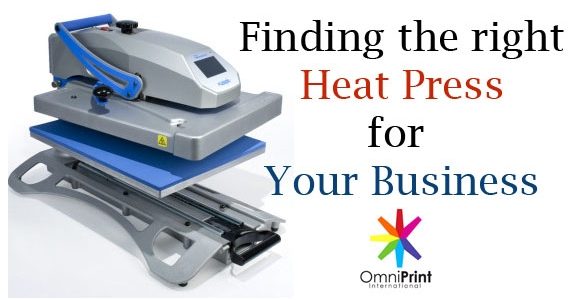Purchasing the right equipment for your business is a big part of a company’s success. Most Direct to Garment business consumers do their research before purchasing a printer. For a newer DTG machine, prices may range from as low as $10,000 to as high as $212,000.
Many consumers will spend the extra cash to get a high-quality machine they can depend on, but keep a lower budget for spending on supporting products like heat presses and ink products. If you are spending top-dollar on your printer, you would assume most people would also purchase top-notch supporting products as well. However, this is not always the case.
Often times, business owners spend more on their Direct to Garment machines or Screen Printers, but skimp on the Heat Press. In this case, it’s important to remember the old saying, “You get what you pay for.” In the end, is the extra money you save by purchasing a cheaper press machine going to be worth it? Here are some things you should consider before you go for the lower-end model.
There are three basic requirements your Heat Press should have:
1) Heat – Does it get hot enough and is the temperature adjustable?
If you are working with different types of materials, make sure you are adjusting the heat to the right amount for each variation of product. Once you set the temperature, your heat press should maintain that temp until you set it to a different amount. Make sure the entire upper platen is covered by a hardy heating element. Experts say, “This ensures an even temperature across the entire platen, and avoids any possibility of a ‘cold spot’ which, because it is not at the same temperature, may cause problems with the application” (ArticlesBase).
2) Pressure – Can you adjust the pressure settings, and does this range work for the products you’re working with?
Even pressure is crucial for a good application when using a heat press. You also want to make sure the pressure is adjustable. Some presses have a manual adjuster, whereas other, more high-end models, can be pre-set. Adjustable pressure is important because different fabrics will need different pressure settings.
3) Time – Is there a timer on the heat press?
Different products require varying amounts of time for heat curing. For example, a black colored T shirt requires twice as much time under the heat press as a white T shirt does. It’s helpful to make sure your equipment comes with a timer. It may be a basic clockwork or digital timer, but most have an audible alert system that tells you when the timer has gone off. This is helpful so you don’t overdo it. Too much heat can negatively affect your print and turn light-colored garments yellow.
All of these qualities are going to effect the presentation and durability of your product. Whether you’re doing a heat transfer or curing a print, be sure to take them into consideration! Another less crucial issue is Size. If you are going to be working with larger images, it will save you work time by purchasing a larger heat press. A smaller press will work, but you will have to position the garment and apply the heat press multiple times. This also makes it difficult to get even heat application.
Now let’s discuss the two general types of heat presses on the market; the Clamshell, and the Swingaway.
Clamshell
The “Clamshell” is called such because it opens and closes similar to a clam shell, and it is the industry’s first type of heat press. This model type is generally cheaper than the Swingaway and has a much smaller “footprint” on the work surface. Experts say to check if the “upper platen is ‘floating’ in the open position. This means that when the press is closed it will meet the lower platen at the same time and completely evenly. If the upper platen is stationary, it is likely that the back of the platen will meet first as the machine is closed, and this could cause some problems with application” (ArticlesBase).
This particular model, the Hotronix Fusion Heat Press, is equipped with touch screen technology and the only heat press with a patented dual function. This advanced innovation provides you with the benefits of both swinger and draw-style heat presses.
The “Swingaway”
With this model, the upper platen is moved manually to the side of the press, making it easy to prepare the garment for application. “This type of press requires a larger work area as its “footprint” is greater than the clam shell. It also tends to be more expensive. It does offer the advantage of easier access, and enabling more space to carry out laying out the garment and print on the lower platen” (ArticleBase).
This model, the Hotronix Heat Press Air Swinger, is 0perated by an air compressor (not included). The Air Swinger heat press reduces operator fatigue, making it great for high-volume production. The advanced EZ-Load System increases your production time and allows unobstructed heat applications.
The swing-away upper platen also allows for a heat free work space. This heat press provides top-down pressure ensuring no movement of the design or logo.
These are just two model examples. There are so many options it can be overwhelming at times, but remember to look for the basic qualities outlined in this post; heat, pressure, time and space! For more helpful information on what to look for when purchasing a heat press, read The Heat Transfer Press – The Facts! by Martin Borley. You can also view the heat presses recommended by OmniPrint International on our website.
Questions or comments? Post them in the comment section below!
Sincerely,
OmniPrint International

